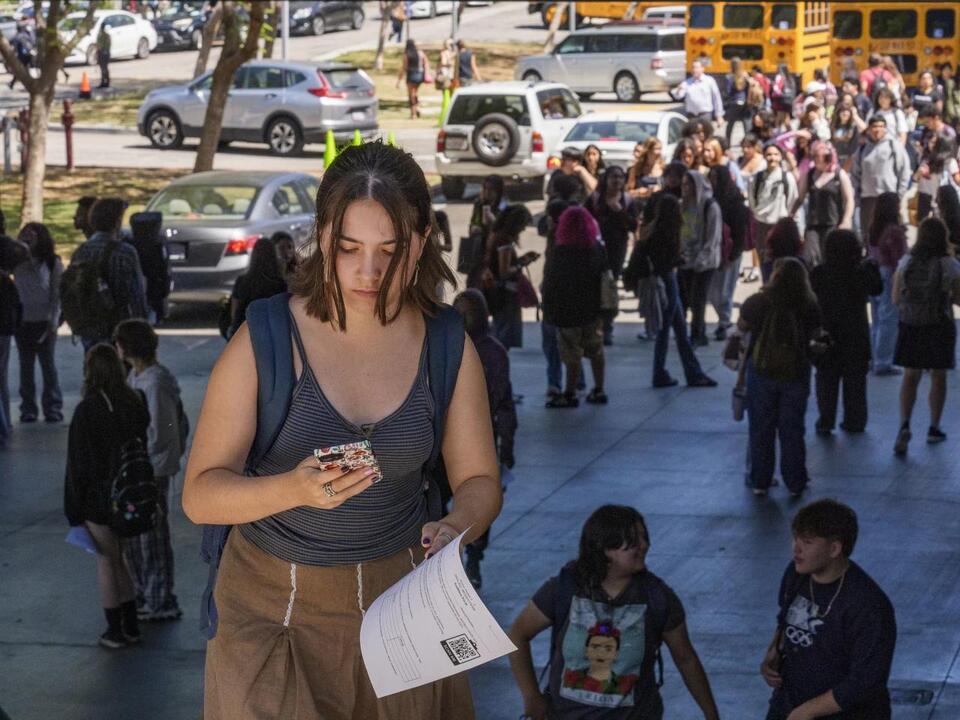Physical Address
304 North Cardinal St.
Dorchester Center, MA 02124
Physical Address
304 North Cardinal St.
Dorchester Center, MA 02124

California’s school districts are now mandated to establish regulations limiting smartphone use among students. This new measure was signed into law by Governor Gavin Newsom and aims to reduce distractions in classrooms while addressing concerns related to mental health in the age of social media.
With this law, California joins several other states, including Florida, Louisiana, and Indiana, that have implemented similar restrictions to minimize student phone access during school hours. The intent is to encourage students to engage more with their studies and peers instead of their screens.
In a statement regarding the law, Governor Newsom expressed optimism, stating, “This new law will help students focus on academics, social development, and the world in front of them, not their screens, when they’re in school.”
However, the decision hasn’t been without controversy. Critics argue that it shouldn’t fall upon teachers to enforce these restrictions. Some have raised concerns that such policies could hinder a student’s ability to communicate during emergencies, while others feel that the regulations should be determined on an individual district or school basis.
Troy Flint, a representative from the California School Boards Association, articulated these concerns, saying, “We support those districts that have already acted independently to implement restrictions because, after a review of the needs of their stakeholders, they determined that made the most sense for their communities regarding safety, school culture, and academic achievement. We simply oppose the mandate.”
The newly enacted law stipulates that school districts must establish their rules by July 1, 2026, aimed at limiting or prohibiting student smartphone use while students are on campus. These policies will need to be reviewed and updated every five years.
This legislative action follows a 2019 law which allowed districts the authority to impose restrictions on student phone usage. Governor Newsom revisited the issue after the U.S. surgeon general advocated for Congress to put warning labels on social media platforms regarding their effects on young people. Last month, he urged districts to limit student smartphone use, coinciding with a vote by the Los Angeles Unified School District board to institute a ban on student phone use during school hours starting in January.
The bill was introduced by Republican Assemblymember Josh Hoover, whose own children attend schools where phone restrictions are already in place. He noted that while students often resist these policies—reflecting the addictive nature of smartphones—many ultimately recognize the benefits in terms of improved focus and social interactions.
“Anytime you’re talking about interrupting that addiction, it’s certainly going to be hard for students sometimes,” Hoover said. “But overall they understand why it’s important, why it helps them focus better on their classes, and why it actually helps them have better social interaction with their peers face to face when they’re at school.”
Some parents worry that banning cellphones could cut off communication with their children during emergencies, especially in light of tragic incidents like the recent school shooting in Georgia that resulted in multiple casualties. However, the existing law from 2019 allows for exemptions during emergencies, a provision that remains unchanged by the latest legislation. Supporters of phone restrictions argue that silencing phones might be beneficial during a crisis, preventing them from inadvertently revealing a student’s location.
Feedback from teachers has indicated a positive change in student engagement since implementing a full ban on phone use at Santa Barbara Unified School District. Assistant Superintendent ShaKenya Edison reported noticeable improvements in classroom focus.
Nick Melvoin, a board member of the Los Angeles Unified School District, emphasized that having uniform policies can alleviate students’ feelings of missing out on social media, creating a more equitable environment for all students.
Before implementing a ban on cellphone use during school hours, Sutter Middle School Principal Tarik McFall noted that students often recorded fights and engaged in TikTok challenges instead of socializing with one another. The new policy has dramatically transformed the school’s culture, fostering more direct interaction among students.
As teachers increasingly integrate technology into their lessons, particularly since the COVID-19 pandemic, options remain for students who forget their Chromebooks at home. Mara Harvey, a social studies teacher, explained that for many students, their smartphones serve as a necessary alternative to access online materials when their primary devices are unavailable.
As California moves forward with these regulations, schools across the state will need to balance the concerns of students, parents, and educators while fostering an environment conducive to learning and personal development.
Source: AP News



